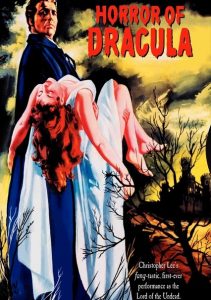Die! Die! My Darling! -1965
Director Silvio Narizzano
Starring Tallulah Bankhead, Stefanie Powers, Peter Vaughn
Scott’s Review #1,437
Reviewed September 2, 2024
Grade: B
Die! Die! My Darling! (1965) is a British horror film released under this name in the United States, but it was initially titled Fanatic in the United Kingdom. This was frequently done for marketing purposes.
The film follows a young woman, played by Stefanie Powers, who wanders into the clutches of an old wacko, played by legendary actress Tallulah Bankhead. The once-sultry actress is unrecognizable as an elderly, hobbling old crone who is a religious freak.
She blends nicely into the 1960s trend of a once sexy and acclaimed actress going the horror route sans glamour or makeup. Bette Davis did the same thing, most notably in 1962’s What Ever Happened to Baby Jane? who Bankhead’s character is similar to.
One could argue that Davis led the pack with heavyweights like Joan Crawford, Joan Fontaine, and Veronica Lake.
Patricia Carroll (Powers) plays an American woman who travels to London to marry her boyfriend, Alan (Maurice Kaufmann). While there, Patricia decides to visit Mrs. Trefoile (Bankhead), the mother of her deceased ex-fiancé, to pay her respects and chat with the woman before marrying Alan.
Upon arriving, however, Patricia discovers that Mrs. Trefoile’s grief over her son has transformed her into a lunatic, and the woman plans to ‘save’ Patricia by holding her prisoner and helping her see God’s light.
Mrs. Trefoile’s staff—the housekeeper, Anna (Yootha Joyce), the groundsman, Harry (Peter Vaughn), and the mentally challenged, Joseph (Donald Sutherland)—are along for the ride.
The film is a perfect late-night watch and should not be taken too seriously. Once Patricia is locked in the upstairs bedroom of the quaint English cottage, it’s no surprise that she will eventually escape.
The fun is watching her many attempts at freedom and the inevitable conclusion.
Director Silvio Narizzano provides genuine thrills and peril that would make Hitchcock proud. When Patricia crafts a makeshift rope by tying bed linens together to climb down the side of the house, I hold my breath, hoping she will make it as she carefully scales past two characters chatting near a window.
The comical element is how she cannot physically overpower the older woman or Anna. She is younger, more muscular than either, and has the will to survive.
But Die! Die! My Darling! It isn’t meant to be analyzed but merely enjoyed. Narizzano fulfills that request with a nice set design of the cottage interiors, superior acting by Bankhead and Powers mainly, and real moments of peril the audience can enjoy.
As a viewer, I felt emotionally invested in the characters and couldn’t wait for Patricia to escape and Mrs. Trefoile to give her desserts.
I mostly enjoyed Patricia’s determination and battle with the wicked older woman. Some characters might have cowered to her demands, but Patricia remained strong in what was undoubtedly an effort to provide for 1960s feminism.
This counterbalances nicely with Mrs. Trefoile’s old-fashioned religious fanatism. It’s the old versus the new, especially when Patricia admits she’s not into religion.
Bankhead is the highlight, and I could only imagine Davis playing the role instead. Bankhead plays the part magnificently, and accurate glamour shots of Bankhead appear to have been used to show a younger Mrs. Trefoile, an actress.
The film is a cat-and-mouse affair and begins with a quick graphic of a cat chasing a mouse. Fans familiar with Hammer Horror Productions can rest assured that the cheap but effective sets are fully displayed.
A creak here and there and battered couches and walls only enhance the experience.
Die! Die! My Darling! (1965) is recommended for horror fans or Bankhead fans who want to see her stripped down, only three years before she died at age sixty-six.











